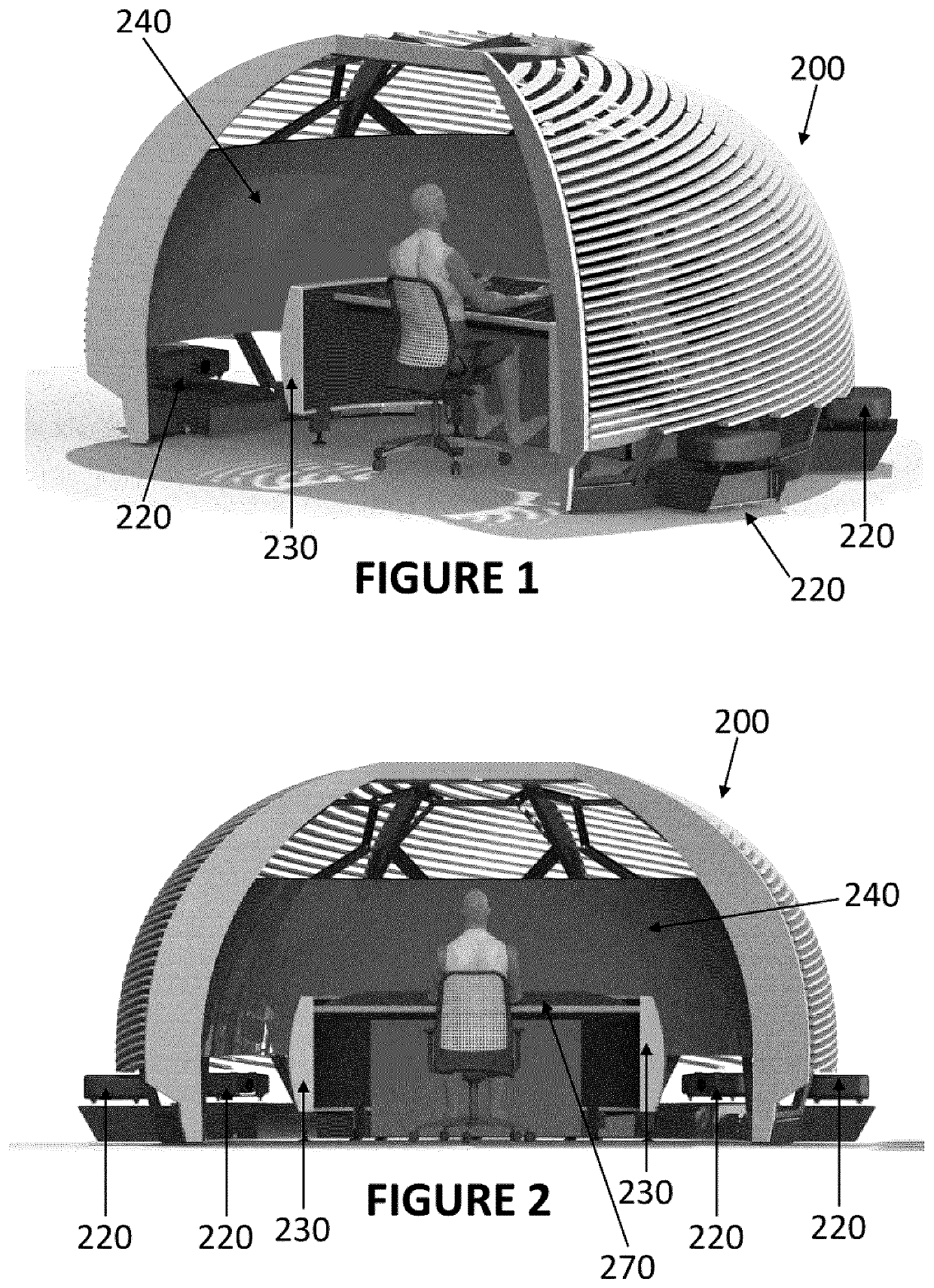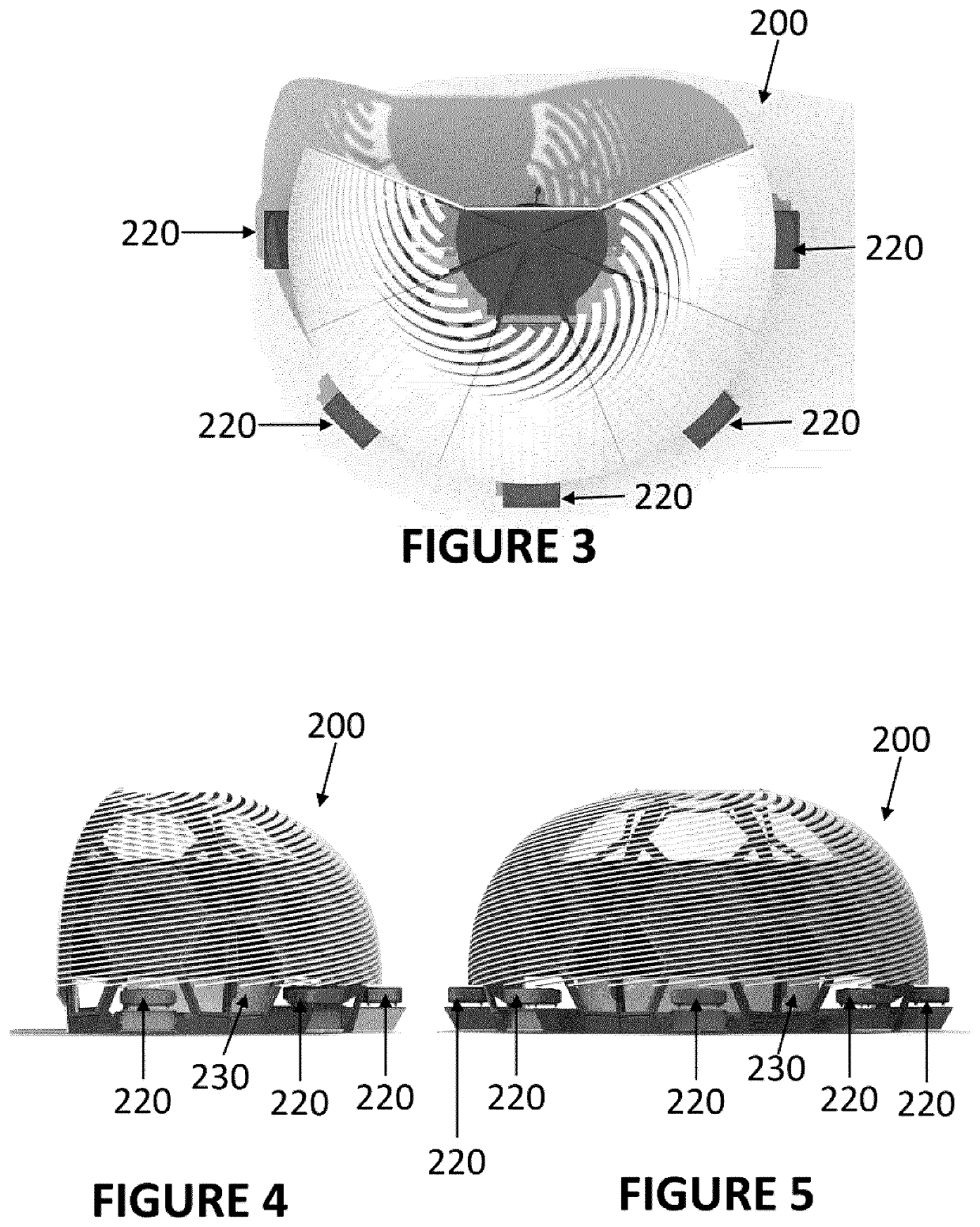Method to control a virtual image in a display
a virtual image and display technology, applied in the field of mirror optics, can solve the problems of difficult integration of high-resolution and high-quality displays, limited determination of the location of virtual images for non-planar mirrors or lenses, and the conflict between depth cues of virtual reality displays
- Summary
- Abstract
- Description
- Claims
- Application Information
AI Technical Summary
Benefits of technology
Problems solved by technology
Method used
Image
Examples
experimental verification
[0162]These results were verified by experimentally measuring the depth of image points reflecting from a mirrored surface using two cameras.
[0163]A silver-coated hemisphere made of acrylic with a diameter of 18″ in diameter was used as the hemispherical mirror. A 55″ LG OLED HD television was placed 15 mm above this hemisphere, and two Point Grey BlackFly cameras were placed and mounted on an optics table 686 mm from the hemisphere's center. A custom part was used to keep the cameras at a separation of 54 mm and to ensure the cameras were directed parallel to one another.
[0164]FIG. 19 shows stereoscopic measurements for pinhole cameras. The distance of objects relative to the two cameras were determined via triangulation, based on a technique often used in computer vision. Based on the distance between the two cameras, B, the focal length of the cameras, fL and fR, and the measured location of the object in the two images, xL and xR, the depths were determined using the following f...
PUM
 Login to View More
Login to View More Abstract
Description
Claims
Application Information
 Login to View More
Login to View More - R&D
- Intellectual Property
- Life Sciences
- Materials
- Tech Scout
- Unparalleled Data Quality
- Higher Quality Content
- 60% Fewer Hallucinations
Browse by: Latest US Patents, China's latest patents, Technical Efficacy Thesaurus, Application Domain, Technology Topic, Popular Technical Reports.
© 2025 PatSnap. All rights reserved.Legal|Privacy policy|Modern Slavery Act Transparency Statement|Sitemap|About US| Contact US: help@patsnap.com



